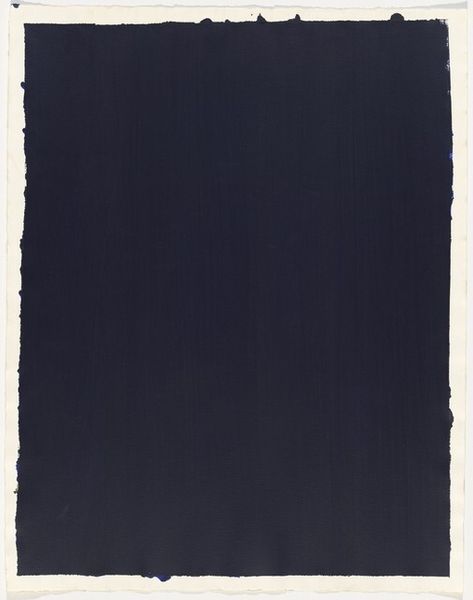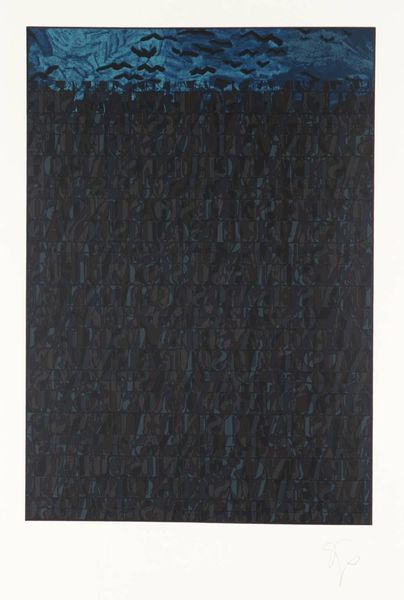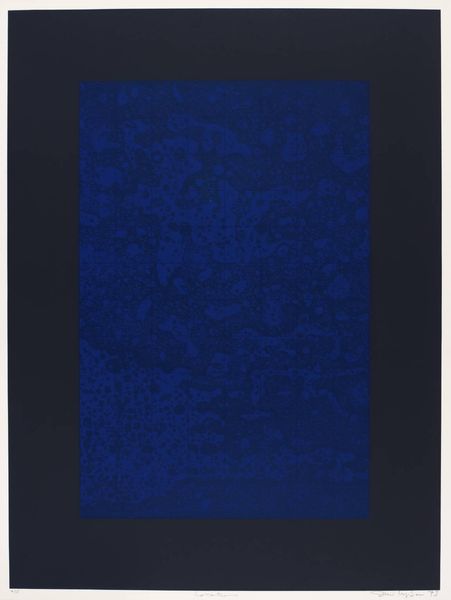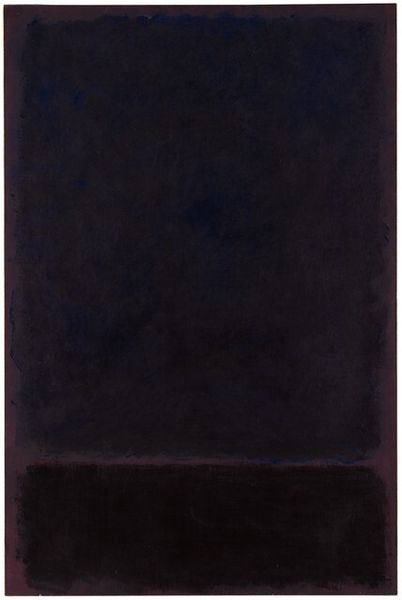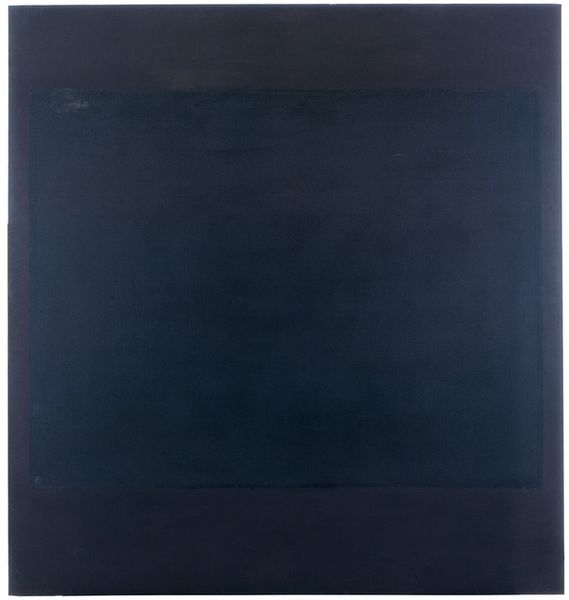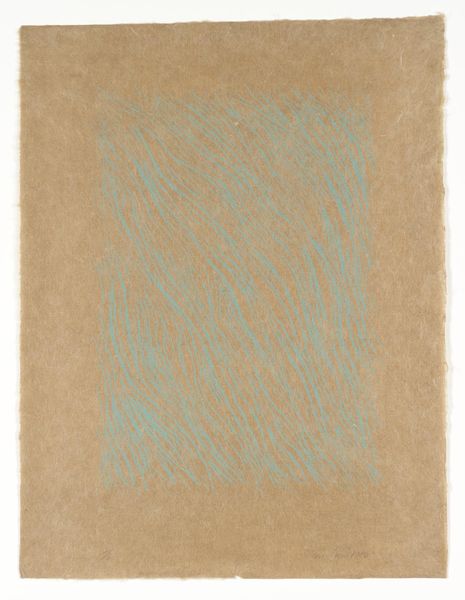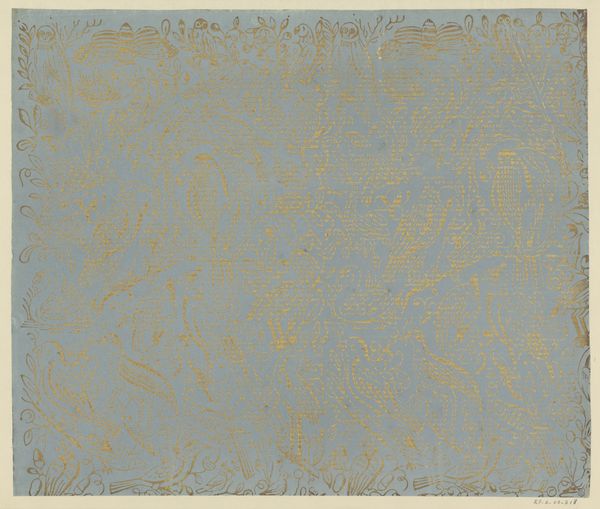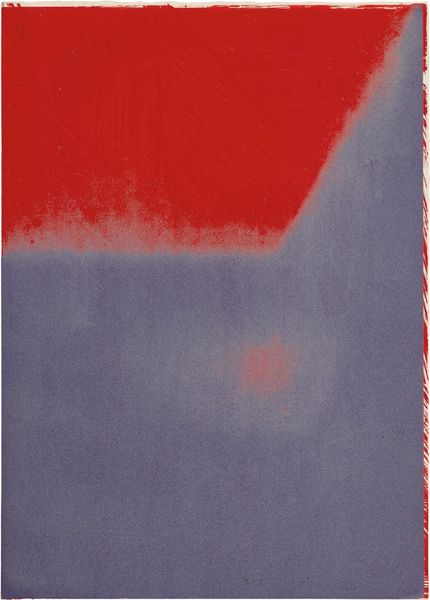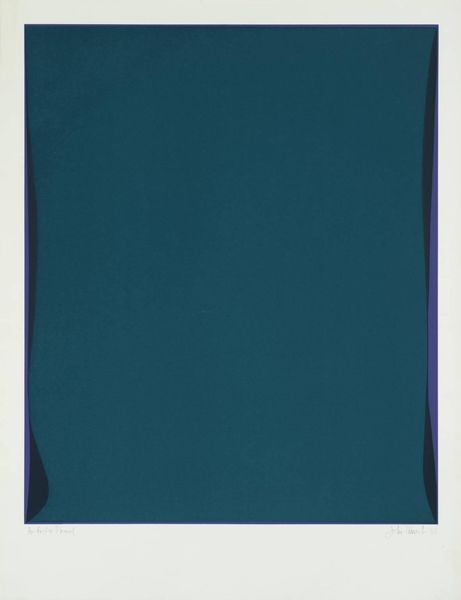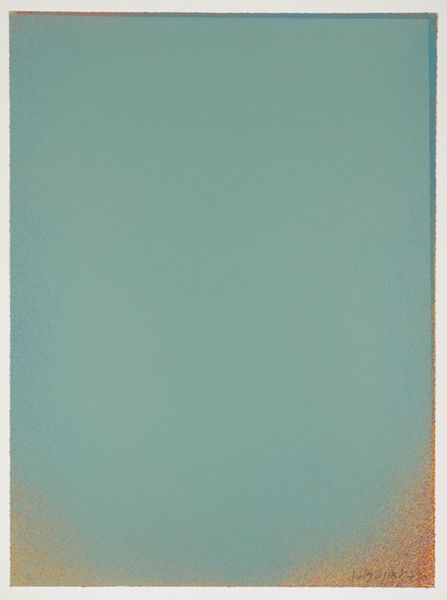
acrylic-paint, serial-art
#
acrylic-paint
#
serial-art
#
abstract pattern
#
rectangle
#
organic pattern
#
geometric
#
art-informel
#
geometric-abstraction
#
abstraction
#
line
#
italian-renaissance
#
layered pattern
#
modernism
#
monochrome
Copyright: Carla Accardi,Fair Use
Editor: We are looking at "Azzurro turchese," a 1964 artwork by Carla Accardi, crafted with acrylic paint. Its mesmerizing layered turquoise pattern evokes a sense of tranquility and depth. What’s your perspective on it? Curator: Accardi's use of acrylic reveals a fascinating engagement with the burgeoning plastics industry. By moving away from traditional oil paints, she challenges the hierarchy of artistic materials, blurring the line between high art and industrial production. The repetitive marks also speak to the labor involved in its creation, a kind of meditative, almost factory-like process. Editor: So you're saying the medium is as significant as the image itself? Curator: Precisely. Acrylic allowed artists like Accardi to explore new textures and chromatic intensities, pushing the boundaries of painting. The layering technique, combined with the material, is what gives the art piece its dynamic visual effects and establishes it as an exploration of industrial possibility in art making. Consider also, how does the perceived 'monotony' affect our consumerist expectations of art? Editor: That makes me rethink its simplicity; I initially saw a soothing color field, but now I see it as questioning our expectations of labor and consumerism. It’s not just about the visual experience, but also the context of its production. Curator: Exactly. Understanding the socio-economic context and the materials involved unveils deeper layers of meaning, transforming what might seem like a mere pattern into a powerful statement about the art world and consumer culture. Editor: I appreciate you clarifying that – now it makes me consider other art using acrylic in a completely different light. Curator: Indeed, recognizing the art materials transforms the experience with art; we consider now both image and its socio-economical imprint.
Comments
No comments
Be the first to comment and join the conversation on the ultimate creative platform.
